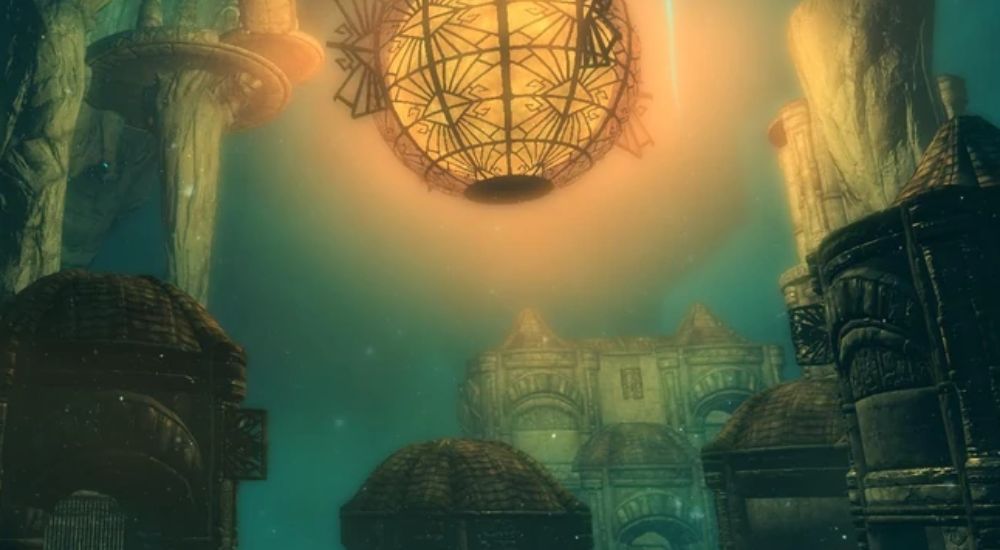Ever since their inception back in the 1950s, games have taken over the world by storm. Nobody ever imagined that a visitor’s day exhibit would later spawn a multi-billion US dollars industry, serving one of the most prevalent hobbies in society: gaming.
Despite the existence of command-line and purely text based games, almost every title in these days comes in either 2D or 3D. However, when it comes to developing your game’s idea, it can be a tough choice for newer developers, who might wonder the advantages of going with either option.
In this article, we will give you an overview of the 2D vs 3D games argument, a conundrum older than time itself, and we’ll list the key differences between both options.
At the end of this post, you will understand their advantages and know the best game engines to develop them, which should allow you to make the correct choice for your game.
Shall we get started?
How do 2D and 3D games differ?
The main difference lies embedded within its name: the “D” stands for dimensions. A game that is created with only 2 dimensions (width and height) is called two-dimensional (or 2D) and those developed with all 3 dimensions (width, height and depth) are called three-dimensional (or 3D).
Since 2D games only have two dimensions, a player only has access to two axes of motion – vertical and horizontal. Despite giving players the illusion of depth, they also go by the term “flat image games”. 3D games, on the other hand, possess depth and volume, which allow us to estimate the size of objects and distances within the game thanks to our innate ability to understand perspective.
However, 2D and 3D games are fundamentally different on many other aspects, some of which are listed below:
Animation
In 2D games, animated sprites are no more than static images with set coordinates being updated every frame. For this reason, 2D sprites must be manually preset and they aren’t able to react to the environment dynamically like in 3D games.
Animation in a 3D environment is much more complex, but you are free to animate anything however you like by moving some bones on a rigged model, which can be controlled dynamically by your game’s code.
Gameplay
Since the 2D world is a flat one, the player can only move and interact with a single plane, making the character’s movements linear. This trait of two-dimensional games allow them to be simple and accessible to every kind of gamer out there. Compare, for example, any 2D Super Mario game with Super Mario 64 – both are extremely hard to master, but it’s much easier to get started with the former.
They also have a starting point and an end point, making for more straightforward, streamlined experiences. While not a bad trait on its own, this makes 2D games more limited in scope and variety.
3D games have, by definition, a volumetric space that players are free to explore however they like. Their graphics and environments are usually well polished and detailed – as they must be to entice the curiosity of players.
One thing about graphics is that they don’t need to be realistic to be aesthetically pleasing: think of Slime Rancher’s smooth models and most voxel-based games for example. They must be cohesive and fit your game’s mood, however.
In addition, the camerawork in 3D games is more complex, as it generally allows you to move the camera and see the environment from any angle you wish. In fact, it’s not unusual for developers to hide easter eggs very well within 3D environments, some of which can take years to find!

Production
When it comes to developing games, it doesn’t matter whether you’re making a 2D or a 3D experience, the process as a whole is complex and time-consuming, often requiring skills in a wide variety of fields, including art, storytelling, programming and game design.
Having said that, it’s undeniable that making 2D games is an order of magnitude easier than 3D. We’ll go deeper in detail right below!
Advantages of developing 2D games
– You just can’t beat 2D games in their simplicity, making them the best choice for games that are mechanically simple;
– They are much easier to make than their 3D counterparts as creating and animating assets is faster and more straightforward. The only exception to this is when it comes to characters with very complex designs, which must be redrawn for every frame of the animation;
– 2D games are usually much cheaper than 3D games, which enabled the boom of indie developers throughout the past decade;
– Dealing with the physics of 2D games is much easier, making them the recommended choice for beginners;
– While optimization is important for 2D and 3D games alike, making pretty-looking 2D games run smoothly in older machines is a relatively simple task.
Advantages of developing 3D games
– Versatility: you can make a game in any genre with 3D. Be honest with us: can you imagine what a first-person shooter would look like in 2D? What about a game like Fall Guys?
– 3D games are much more immersive partly due to the increasingly realistic graphics. Love them or hate them, Cyberpunk 2077, Red Dead Redemption 2 and Ghost of Tsushima are games that look wonderful and cohesive, which helps players get immersed into their worlds;
– By taking on the challenge of making a 3D game, you will develop valuable skills that are sought after in the industry;
– 3D games are the go-to choice for extended reality (XR) games, an umbrella term that encompasses augmented reality (AR), mixed reality (MR) and virtual reality (VR) games.

Which game engines can I use to develop 2D and 3D games?
As is usual, the recommended engines for both 2D and 3D games are Unity and Unreal Engine. There are other options, such as Phaser, Godot and Solar2D, but most games are made on the ones we mentioned above.
Unity is the most popular game engine, and for a good reason: its friendliness to beginners is one of Unity’s biggest selling points. It’s also versatile: you can build for almost every platform out there with it, making it popular for every kind of game developer.
To top it off, it’s free until you have made over $100,000 in the last 12 months, and many things can be done through in-app editors with no need to write lines of mind-boggling code. You can’t escape having to code in C#, though.
Unreal Engine is the other popular game engine, which has a significantly higher skill floor to start using it effectively. Despite that, it’s easier on the programming side as it has Blueprint, a visual scripting system, allowing you to skip learning C++, one of the most picky mainstream programming languages. You will still need some programming logic though.
While it’s still possible to make visually stunning games with Unity, it’s far easier with Unreal Engine, the choice of many AAA games in recent years as it comes with several post-processing effects out of the box.
As for revenue, Unreal Engine is 100% free until you have made a million US dollars with your game. Past that threshold, you are required to pay Epic 5% of your revenue.
Creating 2D and 3D games: Summing up
Creating 2D and 3D games has come a long way in terms of technology and impact. With the advancement in technology, 2D and 3D game development has become an essential aspect of the gaming industry. Game developers, whether indie or established companies, can create 2d games easily and effectively, with 2D game engines like GameMaker, Unity, and others. 2D games have a classic touch in gameplay, which reminds gamers of retro platforms like the GameBoy Advance, GameBoy Color, and Nintendo Entertainment System. Meanwhile, 3D game development is the future of gaming. 3d games offer a more immersive gaming experience that lets players interact with the virtual world.
The gaming industry has evolved from traditional genres like platformers and action games, to new genres like open-world games, simulation, and RPGs. These games can be created using game engines like Unreal Engine and Unity. Creating 3d gaming experiences requires knowledge of 3D modeling and rendering techniques that will give the game worlds a realistic touch. Additionally, 3D game development involves blending player control with AI, which can make the games more challenging and satisfying to play. In conclusion, with the growing gaming industry, there has been an increase in demand for both 2D and 3D games. Developers can choose from a variety of tools and tech to create games that offer a range of fun experiences to gamers.
We can develop your game for you
If you are still unsure of which path to take even after learning the advantages of both 2D and 3D games, don’t be afraid to ask for professional help. In any case, we are here to build your upcoming game, which is best done when you’re working alongside experts in the gaming industry.
At Main Leaf, we use Unity and Unreal Engine to create amazing 2D and 3D games for any platform of your choice. With our hundreds of collective years of experience in the field and over 70 qualified professionals, we can cover the entire game development pipeline and create appealing games on demand for our clients.
If you got interested, don’t be afraid to shoot us a message with your game idea by requesting a game quote, which you can do right now by heading to the top of this page. We will get in touch with you as soon as we can!

